Aquatic biomes reflect climate, and also the availability of nutrients and oxygen and the depth to which sunlight penetrates through water.
Life, of course, is not limited to the land; diverse communities thrive in both freshwater and marine environments. Organisms that live in water face functional challenges distinct from those on land, and this helps to explain the nature of aquatic biomes. From the point of view of evolution, terrestrial organisms evolved from ancestors living in water, but to understand ecology, it is helpful to go from familiar terrestrial biomes to aquatic examples we generally experience only indirectly.
The most obvious distinction between terrestrial and aquatic biomes is that water is denser than air. For primary producers, buoyancy in water can provide mechanical support, reducing or eliminating the need for structural tissues such as wood. Also, primary producers on land are tethered to the ground both by gravity and the availability of nutrients and water, but this is not the case in aquatic biomes. In aquatic environments, nutrients are dissolved in encompassing waters, and by controlling their buoyancy, aquatic primary producers can live far from shore in surface waters bathed in sunlight.
Just as on land, the structure and distribution of primary producers governs patterns of consumer organisms. Aquatic plants and macroscopic algae are important primary producers in shallow aquatic environments where they can take advantage of nutrients transported from land while remaining anchored to the riverbed, lakebed, or seafloor. In larger lakes and the open ocean, however, phytoplankton—photosynthetic microorganisms that float in sunlit waters—are predominant primary producers, combining high rates of primary production with low biomass.
In shallow aquatic environments such as lake margins and coastal marine settings, much plant, algal, and animal debris accumulates in sediments, supporting luxuriant growth by bacteria. As on land, these decomposers provide food for many larger consumers, including the larvae and juveniles of commercially important fish and invertebrate species. Fungi, so important in terrestrial biomes as decomposers, are generally thought to play only a minor role in aquatic environments, although recent surveys of marine sediments show that where organic matter is abundant and oxygen is absent, microscopic fungi can be major components of the decomposer guild. Bacteria also play a critical role in cycling the remains of phytoplankton and other open-water organisms, both within the water and on deep lakebeds or seafloors.
Grazers such as snails and fish feed on marginal plants and algae, while single-celled protists and microscopic animals called zooplankton consume phytoplankton that floats in the water. As on land, secondary consumers such as other fish or squid feed on the grazers, adding complexity to food webs. Plankton, whether photosynthetic or heterotrophic, generally have only limited powers of locomotion and so drift with the current. In contrast, secondary consumers collectively called nekton—fish, squid, whales, and others—can move actively through their watery surroundings. Because oxygen gas dissolves in water only to a limited extent, surface waters directly beneath the atmosphere will have an O2 concentration about 20 times lower than that of the air. This compels larger animals to be moving constantly to keep their gill systems well oxygenated, or to live in places such as cold running streams and rocky marine coastlines where currents naturally produce well-oxygenated water.
Page 1053
Page 1054
Page 1055
Page 1056
Page 1057
The main freshwater biomes are lakes and rivers (Fig. 48.12). These vary tremendously in climate, and also in nutrient input and oxygen availability. In general, the turbulent flow of water ensures that rivers are well oxygenated. Some lakes, however, are physically stratified, meaning that the density of bottom waters keeps them from mixing upward with shallow waters. Organic remains that sink to deep waters provide food for respiring bacteria, and this draws down oxygen levels. Where nutrient influx is high, such lakes can become anoxic in their deeper parts; this is particularly common where human activities have increased nutrient loads entering the lake (Chapter 49).
FIG. 48.12 Representative freshwater biomes.
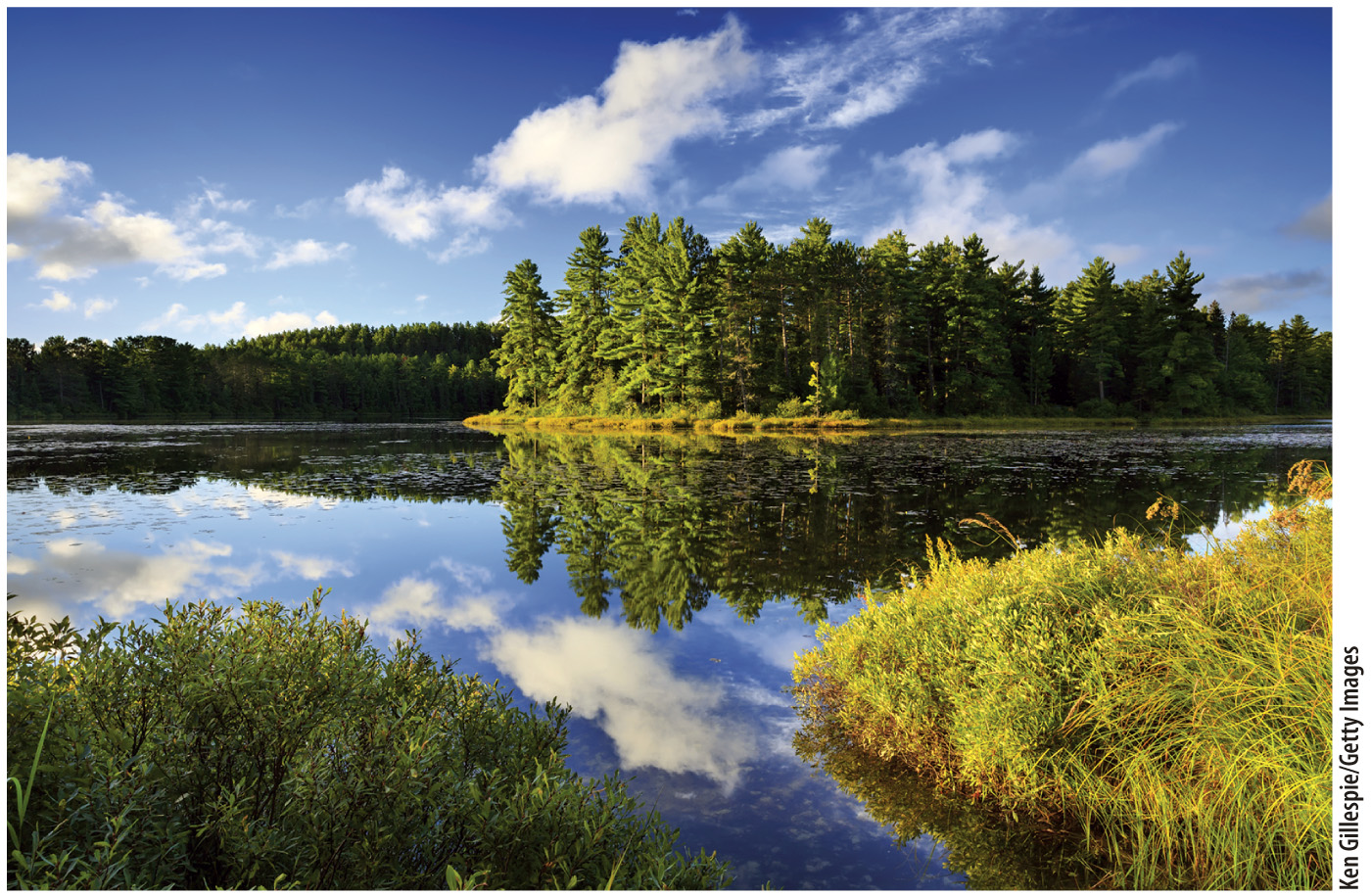
Lakes
Lakes and ponds range in size from tiny temporary pools to the Great Lakes of North America, which contain more than 20% of all freshwater habitats in the world. They range geographically from the equator to above 80° N. Their chemistries vary with the types of terrain in which they are found, and nutrient levels can be low to extremely high. Aquatic plants and macroscopic green algae live along the shallow margins of lakes, and both algae and cyanobacteria are primary producers throughout the photic zone. Zooplankton include small arthropods and rotifers, whereas the nekton is dominated by fish. Turtles and birds also play an important role as grazers and predators in many lakes.

Rivers
Rivers are freshwater biomes characterized by moving water. Rivers and streams, like lakes, vary tremendously in size and chemistry. Because of currents, rivers are generally well oxygenated, although oxygen levels may be lower in slowly moving rivers on floodplains. As with lakes, plants and large algae grow along river margins, while phytoplankton photosynthesize throughout the water column. Insects are important consumers, but other invertebrates, fish, turtles, and birds can all be abundant and diverse. Salmon and some other fish spend much of their lives in the oceans but swim up rivers to reproduce.
Only about 2.5% of Earth’s water is fresh, and most of this water occurs in glaciers, permafrost, and groundwater within soils. Overwhelmingly, the water on our planet is seawater. Covering 71% of Earth’s surface and reaching a depth of nearly 11,000 m (almost 7 miles), the oceans constitute Earth’s largest biomes. In fact, the oceans are so large and so diverse in their biology that ecologists commonly subdivide them into distinct realms based on depth and proximity to the shoreline (Fig. 48.13).
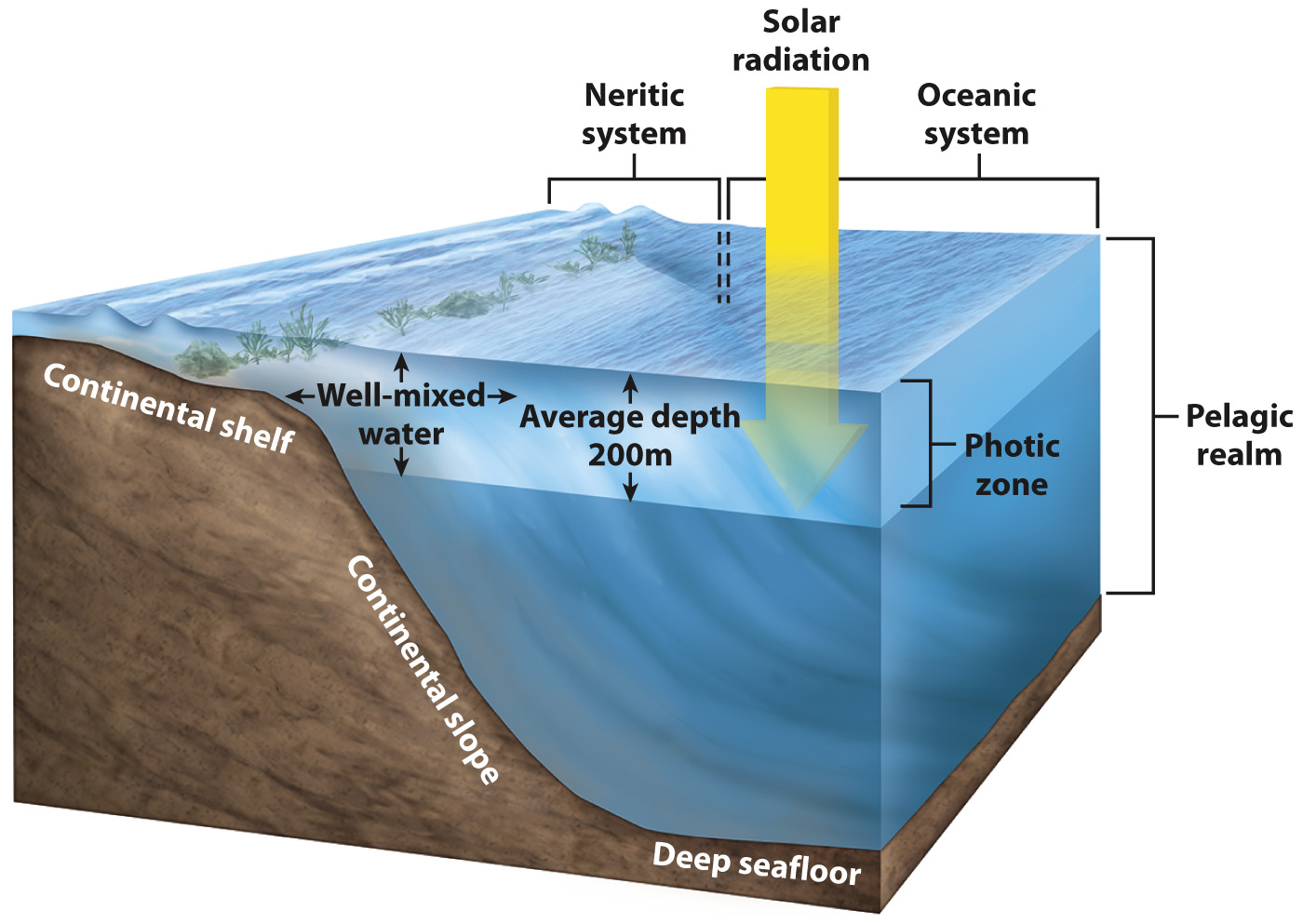
FIG. 48.13. Biomes in the sea. Marine biomes reflect distance from the shore and the depth of ocean basins.
The dimensions of the oceans matter because they determine the distribution of nutrients, oxygen, and light. Runoff from the continents (supplemented by nitrogen fixation by marine cyanobacteria) provides most of the nutrients required by primary producers in the sea, but because sunlight rarely penetrates much deeper than about 200 m (the photic zone), most of the ocean’s volume is off limits for photosynthetic organisms. Life in the deep sea is largely sustained by detritus that rains downward from surface waters, although chemoautotrophic bacteria and archaeons contribute as well. Particle- and filtering-feeding animals, as well as microbes, respire this rain of detritus, returning phosphorus and nitrogen to the water. These nutrients eventually return to the surface in upwelling waters, mostly along continental margins, where they support locally high rates of photosynthesis. Upwelling regions make up only about 1% of the ocean’s surface area, but by some estimates, they support more than 20% of all commercial fish populations.
Many different groups of algae contribute to primary production on continental shelves, with diatoms, coccolithophorids, and dinoflagellates dominating in most regions. Because these algae turn over rapidly—most are eaten by grazers or lysed by viruses within a few days—their total biomass is commonly lower than that of grazing zooplankton, inverting the trophic pyramid characteristic of terrestrial ecosystems (Chapter 47). In the middle of large ocean basins, broad areas called gyres that are bounded by major currents, lie far from continental and upwelling sources of nutrients; their low primary productivity is dominated by cyanobacteria and tiny algae discovered only recently.
Page 1058
Viruses play a particularly large role in marine biomes, lysing up to 30% of phytoplankton daily in coastal ecosystems and releasing large amounts of organic molecules into the water column. This organic matter supports large populations of respiring bacteria, forming a microbial loop in the carbon cycle (Chapter 25). In turn, bacterial populations in the microbial loop support diverse populations of larger consumers.
Earlier in this chapter, we noted that winds drive ocean circulation, but winds affect only the uppermost waters of the sea. The surface layer that is mixed by the wind, broadly equivalent to the photic zone, is well oxygenated, but in deeper waters, oxygen can be depleted by respiration as microbes feed on sinking organic matter. In a few places, where surface primary production is high, the oxygen level in water masses just beneath the mixed layer declines to zero, forming an oxygen-minimum zone with distinctive microbial populations and only a limited presence of zooplankton and animals. On the deep seafloor and in the waters above it, oxygen is present, but food is sparse, consisting only of a slow rain of particles from shallower depths. Life persists in this biome as scattered populations of animals (especially fish, brittle stars, and polychaete worms), heterotrophic protists, and microbes. The exception occurs at hydrothermal vents, where high concentrations of sulfide, hydrogen, and methane support primary production by chemosynthetic bacteria and archaeons. These, in turn, support locally dense populations of animals.
Page 1059
FIG. 48.14 Representative marine biomes.

Intertidal
The part of the neritic (shallow-water) system closest to shore is the intertidal zone, with its distinctive species associations. The intertidal zone lies along coastlines between mean high and low tides, meaning that organisms in this biome are exposed to the atmosphere on a daily basis. Intertidal organisms are thus challenged by periodic desiccation as well as by temperature extremes that accompany exposure to direct sunlight. In sandy intertidal zones, or tidal flats, many animals burrow into the wet sand to escape exposure at low tide. In rocky intertidal zones, organisms may close their shells tightly—for example, mussels and barnacles. Waves can cause mortality and so, especially along rocky coastlines, both algae and animals are securely attached to the substrate. Nutrient levels can be high, favoring strong algal growth. Consumers include a variety of sea stars, sea urchins, mollusks, barnacles, and corals. Intertidal biomes exhibit the greatest diversity where tidal exposure is relatively short. Tidal pools can harbor diverse animal and algal species.
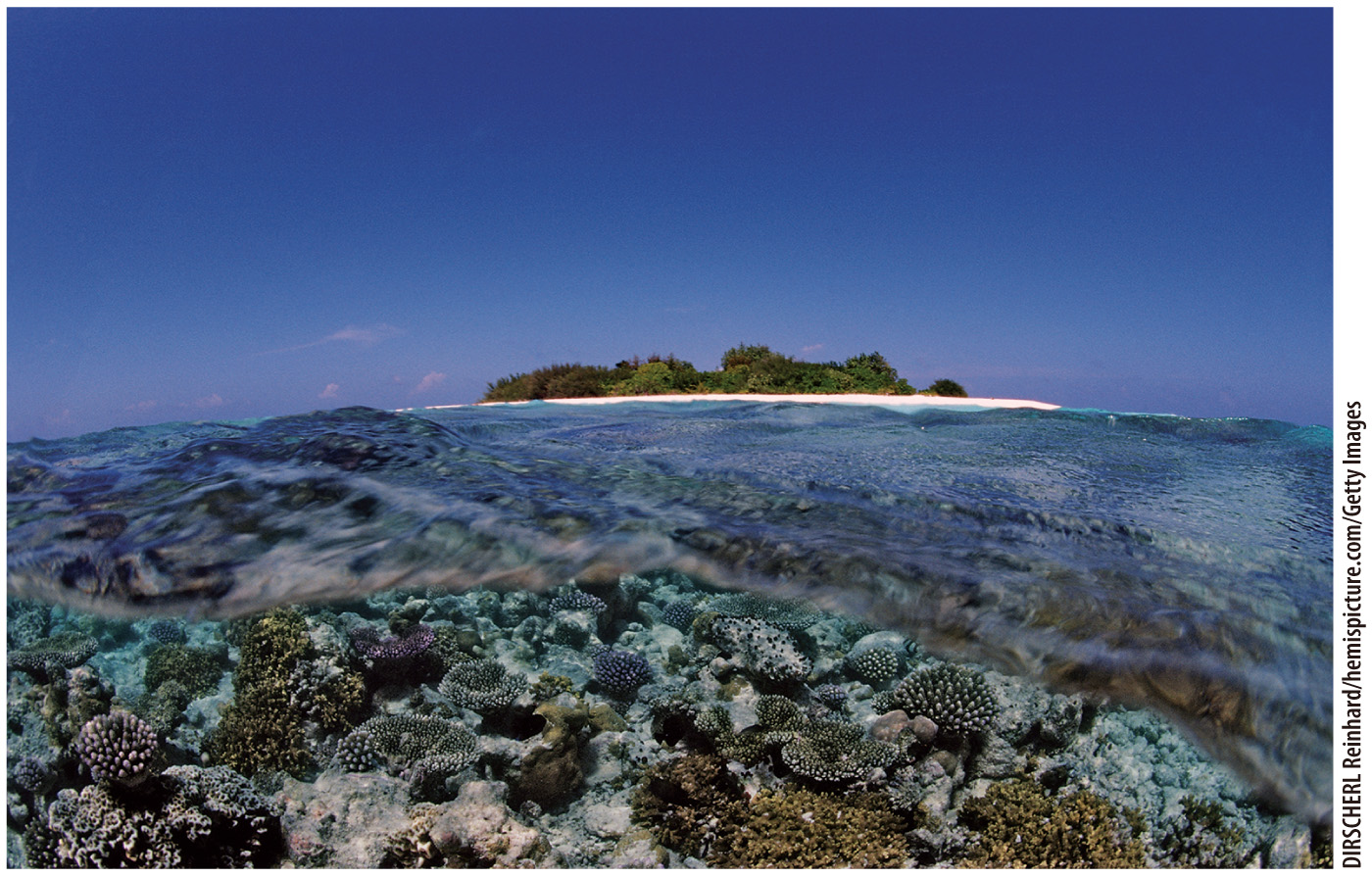
Coral reefs
Coral reefs form another neritic biome, indeed, the most diverse biome in the oceans. The best-known reefs occur in shallow, tropical to subtropical environments where there is little water movement or accumulation of sand or mud, with the accumulating skeletons of corals building a structure above the seafloor. Nutrient levels are commonly low, but primary production is high and mostly tied to dinoflagellate algae that live within the tissues of corals. Rapid recycling of nutrients between the corals and their algal symbionts ensures high levels of primary production. Free-living algae occur in reefs, but are kept at low abundance by grazing fish. Many species of invertebrates live within the reefs, often in nooks and crannies among coral heads that provide shelter from predators. Fish diversity can be especially high. Coral reefs also occur in the deep sea, but build gradually, as coral growth is slow in the absence of symbiotic algae.
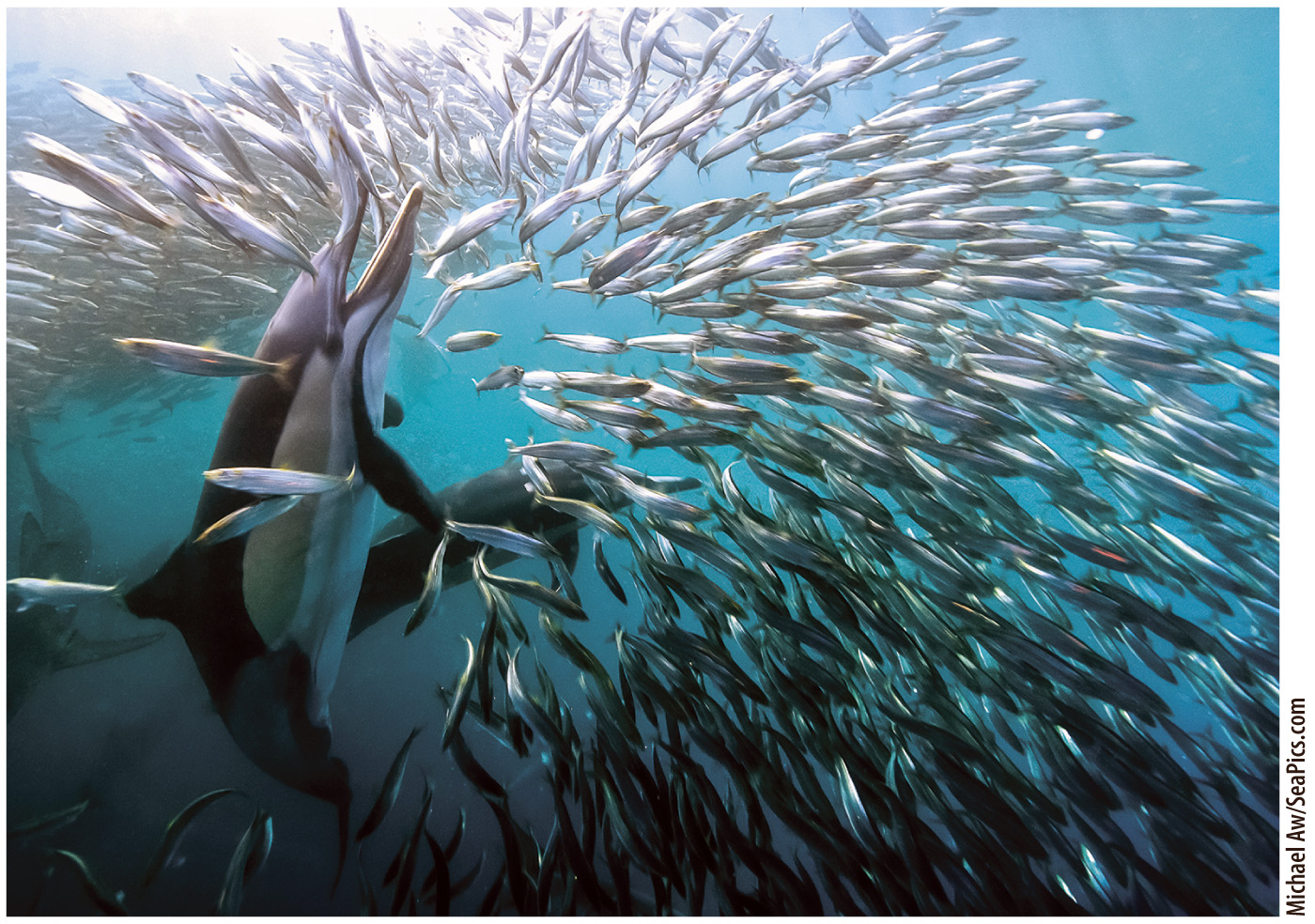
Pelagic realm
The pelagic realm—the part of the ocean that is neither close to shore nor close to the seafloor—forms the bulk of the oceanic system. Organisms live within the water column, either as plankton or nekton. In the upper 200 m or so of the pelagic realm, sunlight permits photosynthesis, with diverse algae and cyanobacteria as primary producers. In deeper waters, however, sunlight is absent and life is sustained by the rain of organic particles from surface waters. Minute arthropods dominate the zooplankton, while fish and cephalopods are key components of the nekton. This is true in both surface and deep waters, but animals are less abundant at depth. Fish and squids are conspicuous consumers, but recent research shows that, in the upper water column, heterotrophic protists may actually be more abundant and diverse. Bacteria and archaeons occur throughout the pelagic realm.
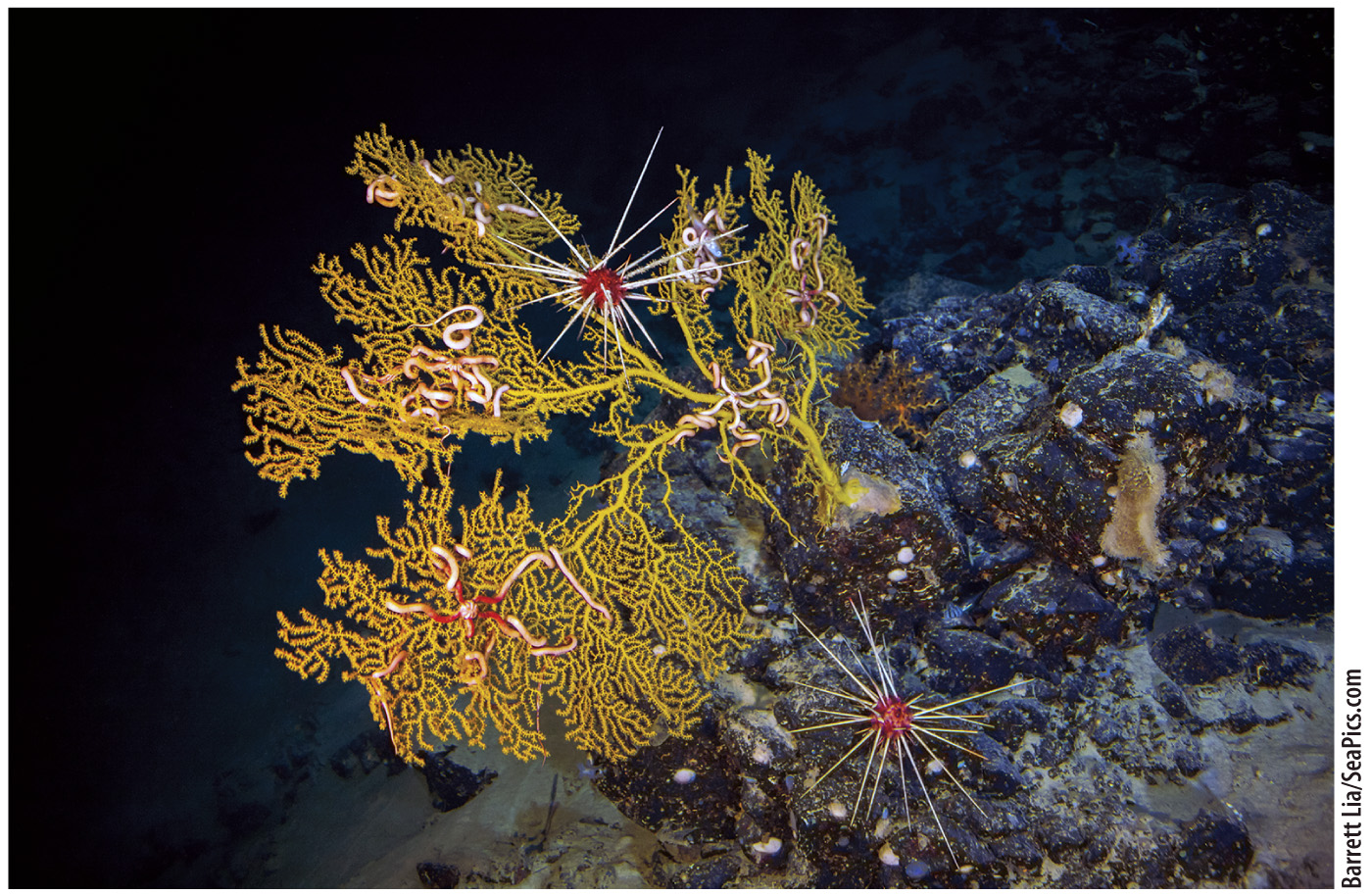
Deep Sea
Kilometers below the surface, deep seawaters are cold and dark, but they are not sterile. Sinking detritus supports sparse populations of animal consumers, as well as bacteria and archaeons that feed on organic particles. Despite their limited biomass, deep-sea biomes exhibit high species diversity, as high as those of shallow marine communities. However, the composition of communities in deep-sea biomes differs relatively little from place to place, and so the total diversity of these environments is lower than that found within the photic zone. Dense animal populations occur locally on the deep seafloor, where hydrothermal vents expel fluids containing high abundances of hydrogen, hydrogen sulfide, and methane. These compounds support locally high levels of primary production by chemosynthetic bacteria, many of them present as symbionts within the tissues of vent animals.






